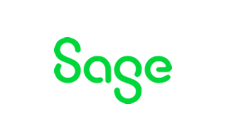Boost cash flow with a CT refund?
Your company made a loss in its last financial year and is badly in need of an injection of cash. How can you turn the loss into a corporation tax refund, and what steps can you take to obtain this at the earliest possible date?
-
Gift relief to be "modernised"
A restriction on gift holdover relief will be reformed in 2026. This will affect gifts of certain shares, so what's the full story?
-
Government rushes through NI cap on pension salary sacrifice
The government has already drafted legislation to impose a £2,000 limit on NI exempt pension contributions under salary sacrifice arrangements. What else do we know?
-
Sneaky change is a blow for side hustles
With most of the media focused on the headline-grabbing announcements from the Budget, a read of the published small print reveals another change coming in 2029. It’s bad news if you are an employee with a side hustle, but what’s going on?

How do refunds arise?
A company may be entitled to a corporation tax (CT) refund for many reasons, e.g. claims for additional tax relief, amendments to earlier years’ accounts or loss carry back claims. Another common reason is where a company has paid tax because it has made a loan to a director shareholder which has wholly or partly been repaid. In this article we’re concentrating on CT refunds relating to loss relief.
Carrying back a loss
If the company makes a loss for tax purposes in the current accounting period, this can be carried back and offset against last year’s taxable profits. It is possible to carry back (but only for one year) any amount up to the level of profits already reported.
If director shareholders are currently taking remuneration in the form of dividends, consider a tax-deductible bonus instead which could create a loss to carry back .
Where a loss arises, monitor future tax rates and consider whether cash now is worth more to the company than increased tax saved in the future, e.g. a loss of £10,000 carried back might save tax at 19% but this is worth less in pure cash terms than prospective relief at 25%.
Making a claim
To claim a refund use yourFormCT600, stating whether the refund should be made via bank transfer or applied against either future CT liabilities or other tax debts such as VAT and PAYE. Including bank details (account number and sort code) on the return should prompt an automatic bank transfer. HMRC also pays interest on CT refunds from the payment date to the earlier of the CT due date and the actual refund date.
A refund can be claimed for previous tax years if there was an error or omission in the tax return so long as it is made within four years of the end of the accounting period.
Submitting early
The deadline for the original submission of the CT600 is twelve months after the end of the accounting period. It is possible to submit early (but not before the end of the accounting period).
Will HMRC play ball?
HMRC has the right to use tax refunds to offset a company’s other tax liabilities but it isn’t allowed to offset a refund against tax bills of other companies just because they are related or in the same group. It must also not delay a repayment in order to wait for a debt to arise. While there is no available appeal against an offset, a company can request that the offset is reviewed. Prevent unnecessary delays by promptly providing any information requested by HMRC to validate your claim.
Accessing the refund
HMRC’s stated aim is to process refund claims within a few weeks of receiving the necessary documentation and information. Keep tabs on the progress of the refund claim by logging into the company’s HMRC online account or contacting HMRC directly for an update.





 This website uses both its own and third-party cookies to analyze our services and navigation on our website in order to improve its contents (analytical purposes: measure visits and sources of web traffic). The legal basis is the consent of the user, except in the case of basic cookies, which are essential to navigate this website.
This website uses both its own and third-party cookies to analyze our services and navigation on our website in order to improve its contents (analytical purposes: measure visits and sources of web traffic). The legal basis is the consent of the user, except in the case of basic cookies, which are essential to navigate this website.